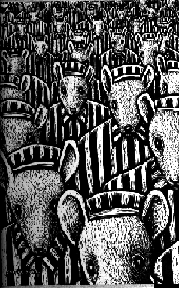
Saving Private Ryan is an Oscar-winning film, winning for Best Director, Cinematography, Film Editing, Sound, and Sound Effects Editing. The film was praised for its gritty, realistic portrayal of combat in World War II (particularly the storming of the beach).
Our focus while watching this film is to study the “film form.” We discussed “form following function” with graphic novels and comics (with Maus), and it is the same idea with filmmaking. The filmmaking form provides tools for the director to better tell his/her story. We will focus on two such tools unique to the film form—Sound and Cinematography.
Sound & Sound Effects Editing
Believe it or not all sound in a film is put in AFTER principal photography (with the exception of dialogue, but even sometimes THAT is dubbed over). The sounds themselves are created artificially in a studio. The sound editing is the seamless blending together of all the sounds.
- HOW IS SOUND USED EFFECTIVELY IN THIS FILM?
Cinematography
The cinematographer is responsible for the technical aspects of the images (things like lighting and camera work), but works closely with the director to ensure that the “look” of the film supports the director's vision of the story being told.
- HOW DOES THE CINEMATOGRAPHY OF THE FILM ADD TO THE STORY?
